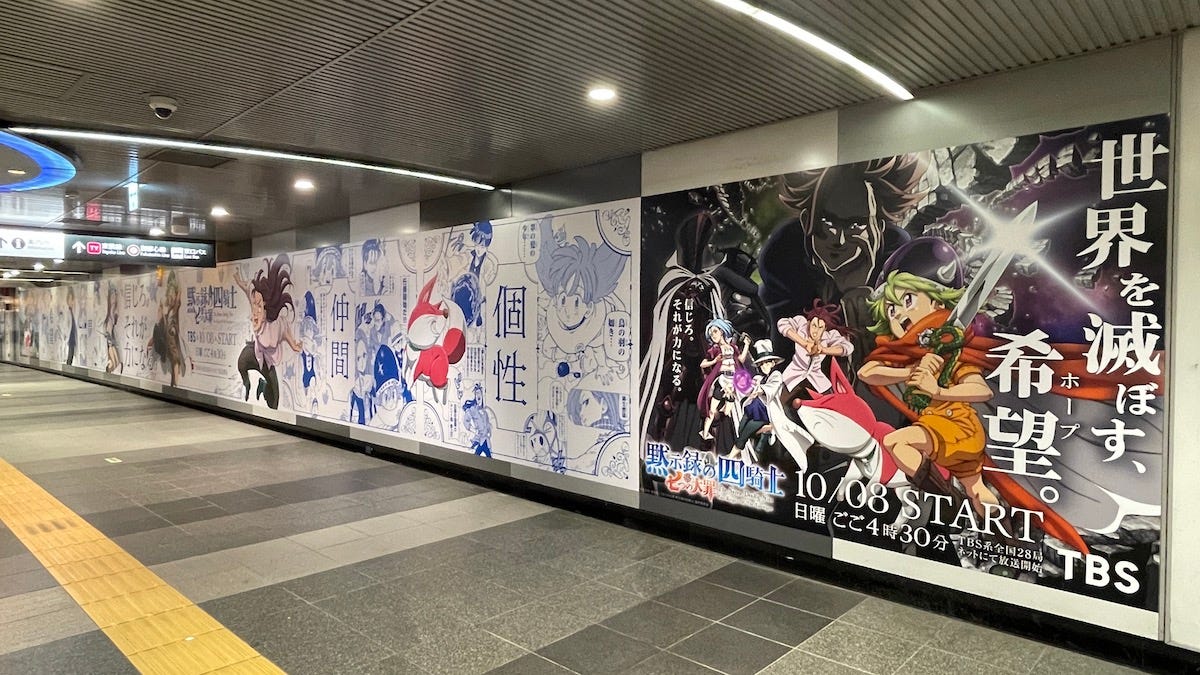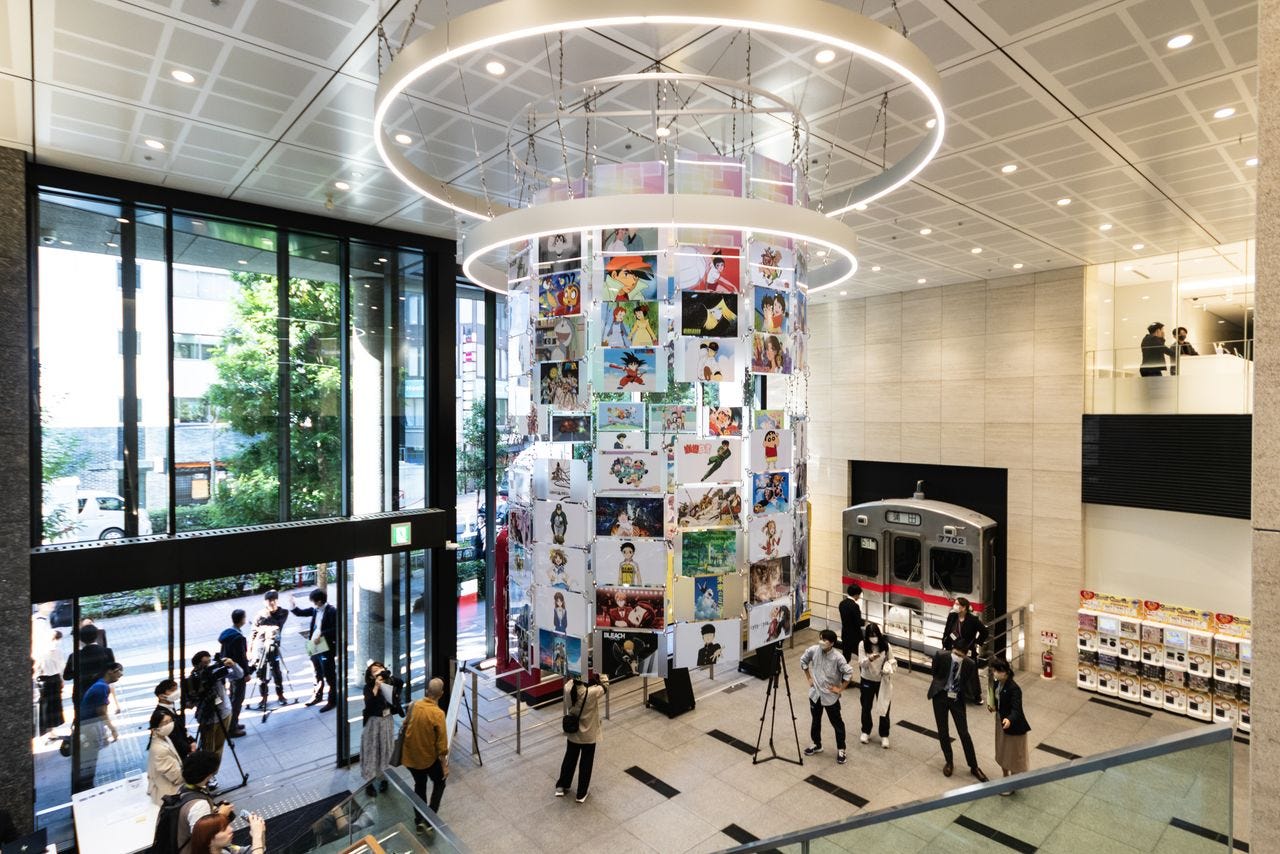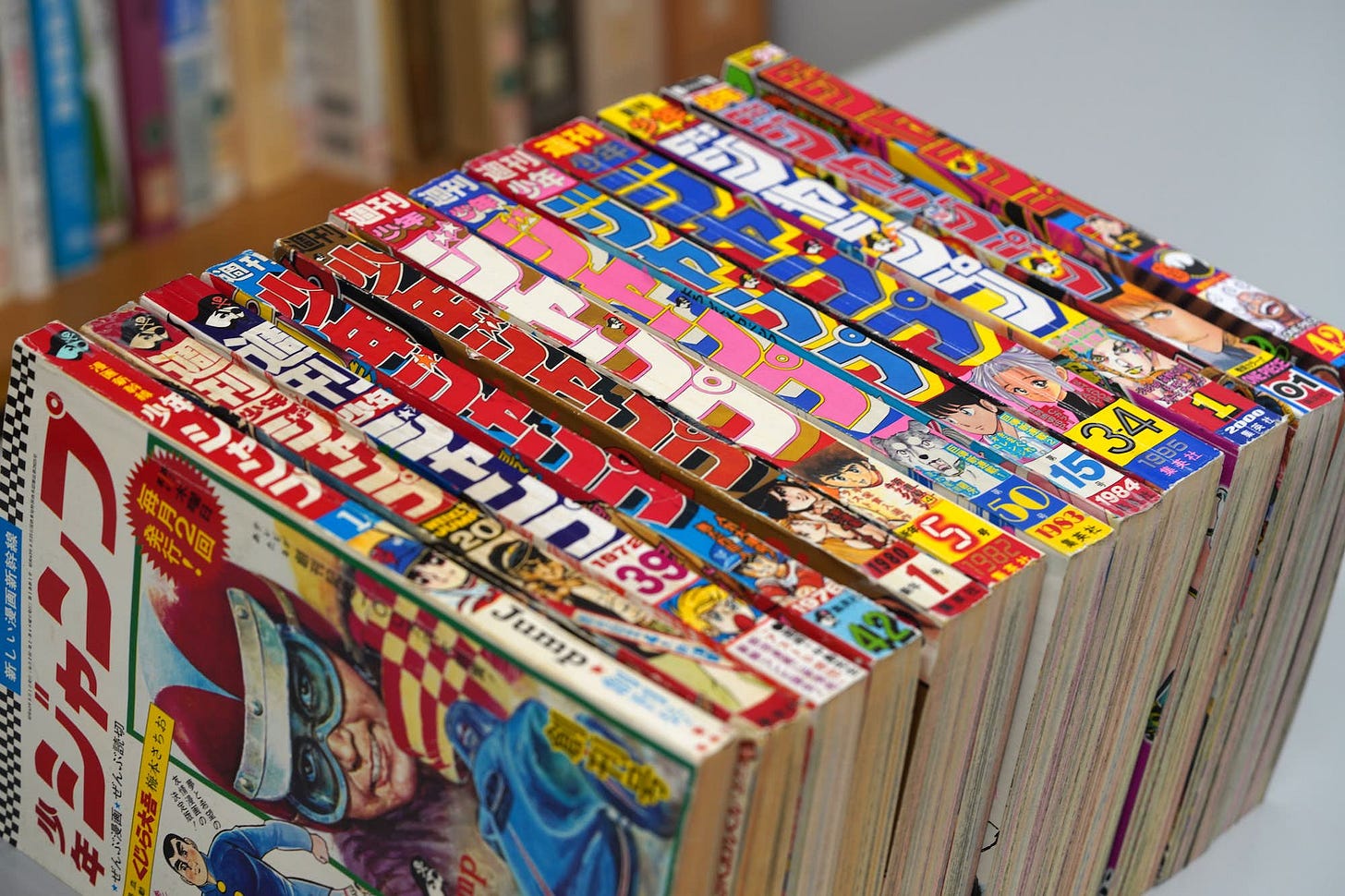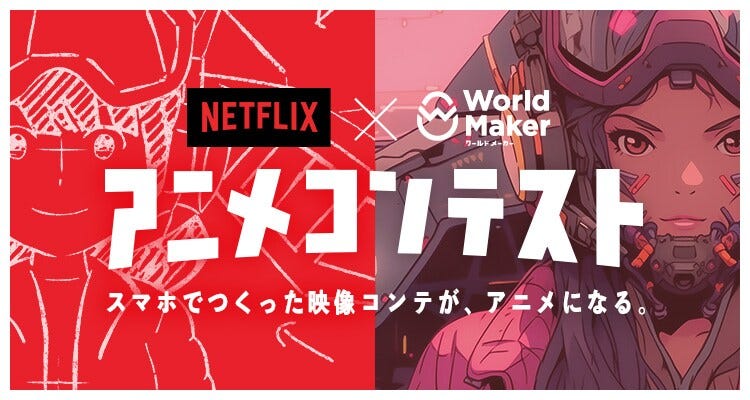Anime producers adapt to 'three-episode rule'
Plus: Weekly Shonen Jump reveals manga manuscript rates; Netflix and Shueisha partner on anime contest; Ikebukuro's emergence as an anime district; and more
This is your weekly Animenomics briefing, covering the business of anime and manga. Today is Wednesday, November 15, 2023.
In case you missed it: Anime NYC returns to the Big Apple this weekend, from Friday through Sunday. Industry guests include Avex Pictures, Bones, Kadokawa, and Crunchyroll.
Anime producers lean on adaptations to retain viewers

Anime’s most prolific viewers often use a ‘three-episode rule’ to decide whether a series is worth watching in its entirety, but a growing number of ‘zero-episode rule’ viewers is forcing anime producers to rely on adaptations of existing media properties to keep viewers interested.
Why it matters: With the number of anime series productions this year climbing to the third highest on record and the highest since 2018, producers can’t afford to gamble on original works to land the next anime hit.
An analysis by pop culture writer Meikou Kawamura found that four out of five of the 80 anime titles debuting this fall season are adapted from other media.
Rewind: Data compiled by the Association of Japanese Animations shows that the number of anime series productions have tripled in the last 30 years.
Anime serials are traditionally the realm of Japan’s television networks, and as younger viewers turn away from television, stations are are investing more and more in anime to keep viewers and sustain their business.
Demon Slayer became a turning point for networks when the series saw more viewers than popular television dramas in some weeks.
Where things stand: Investors are looking for the next intellectual property that will bring swift returns on investment, and that means relying on proven titles.
“When adapting an anime from a work that is well-known to begin with, it’s easier for the production side to make forecasts,” Kawamura writes.
Zoom in: On the anime community portal MyAnimeList, fans have built a system for tracking score progressions to see how anime titles perform week over week.
Last spring’s Oshi no Ko, adapted from a manga, premiered with an explosive 90-minute first episode, rocketing the anime to popularity, which may not have happened if it were broken up into three 30-minute episodes.
Real Sound reports that Bushiroad, a trading card and video game company, is taking a different approach by premiering its anime three weeks into the season, with its chairman Takaaki Kidani suggesting that it’s easier to compete when fans are watching five anime instead of 15.
On the bright side: Original anime isn’t without its successes. Recent titles like last year’s Lycoris Recoil and Akiba Maid War have shown that original titles can still build strong viewership in Japan and abroad.
Disclosure: The author is a former database moderator and managing editor at MyAnimeList.
Weekly Shonen Jump reveals artist manuscript fees
A series of upcoming online information sessions by editors of Shueisha’s Weekly Shonen Jump magazine is drawing praise for a revolutionary approach to recruit new manga artists—disclosing manuscript fees paid to artists.
Why it matters: This is a first time a manga publisher has publicly disclosed their manuscript fee amount.
“Presenting standard contract terms is common for job offers, but until now it has rarely come up publicly in the work of manga artists,” Tadashi Sudo writes for the Animation Business Journal.
By the numbers: Weekly Shonen Jump pays new artists a minimum of ¥18,700 (US$125) per black-and-white page and at least ¥28,050 (US$187) per full-color page for both serialized manga and one-shots.
Shonen Jump is the best-selling weekly manga magazine today, overtaking older rivals like Kodansha’s Weekly Shonen Magazine and Shogakukan’s Weekly Shonen Sunday by creating a system to develop new manga artists.
What they’re saying: Manga artists took to X (Twitter) to express their approval of the rates offered by Shueisha and Shonen Jump.
“This is almost three times higher than what was paid back when I was a beginner,” Liar Game artist Shinobu Kaitani wrote, comparing the fees to those when he debuted with Shonen Jump in 1994.
Masanori Morita, who drew the boxing manga Rokudenashi Blues, told followers that his per-page manuscript fee was ¥8,000 (US$53) when he debuted in 1988, increasing by ¥1,000 (US$6.60) every year.
Clippings: Netflix, Shueisha partner on anime contest
Shueisha and Netflix are partnering on a contest that will turn storyboard ideas drafted using the Shonen Jump+ World Maker app into new works of anime. The contest has a grand prize of ¥500,000 (US$3,300), with results to be announced in December. (Animation Business Journal)
Yasuhisa Hara’s Kingdom will become the first manga in Shueisha’s young adult male demographic portfolio to have 100 million published volumes in circulation. (The Asahi Shimbun)
Clip Studio Paint, the digital illustration software often used in manga, webtoon, and anime production workflows, has reached an annual recurring revenue (ARR) of ¥3 billion (US$20 million) in subscription fees, says maker Celsys. (Press release)
Short animation studio G-VIS has raised money from a pre-seed funding round led by Tokyo-based Skyland Ventures to produce an anime using a mixture of 3D CG and generative AI technology. (Press release)
Ikebukuro emerges as Tokyo’s modern anime district

Akihabara has long been known as the anime fan’s mecca, but the opening of an anime exhibition facility in Ikebukuro, on the opposite side of town, by the Tokyo Metropolitan Government is cementing that area’s emergence as a modern anime district.
Why it matters: Anime Tokyo Station, which was built at a cost of ¥500 million (US$3.34 million), fulfills the government’s intent to capitalize on the popularity of anime in anticipation of a rebound in foreign tourists.
The details: Anime Tokyo Station houses thousands anime production materials like animation cels, screenplays, and background paintings.
“It is our sincere hope that this facility, just like its name, will become a starting point into the world of anime and that people from all over the world visiting Tokyo will connect with these wonderful works,” Tokyo governor Yuriko Koike told media at the opening ceremony.
The exhibition facility will be managed by the Association of Japanese Animations, a consortium of companies in the anime production industry.
Yes, but: Writing for the Nikkei business newspaper, columnist Hitomi Ishinabe doubts whether the facility is sufficiently prepared for such an ambitious goal.
“One issue seems to be that the exhibits showing the production process are old, such as hand-drawn paintings and film,” Ishinabe writes. “The explanation board said, ‘It’s now digital,’ but the children looking at it seemed to have a hard time understanding it.”
Zoom out: Anime Tokyo Station’s close proximity to Otome Road (Maiden Road), a street lined with stores selling manga and anime merchandise targeting women, and the newly expanded Animate retail store isn’t lost to observers.
“Akihabara was originally an ‘electronics town’, and in the 1990s, when computers were at their peak, there were many male customers who bought computer parts and worked on them,” Animate board director Yukio Koyama told The Asahi Shimbun.
“On the other hand, Ikebukuro has many family-friendly events in Sunshine City. There is an aquarium and apparel stores for women. There are several department stores such as Parco, Tobu, and Seibu in front of the station, making it a shopping district where people of all ages come and go,” Koyama said.
Animenomics is an independently-run and reader-supported publication. If you enjoy this newsletter, consider sharing it with others.




